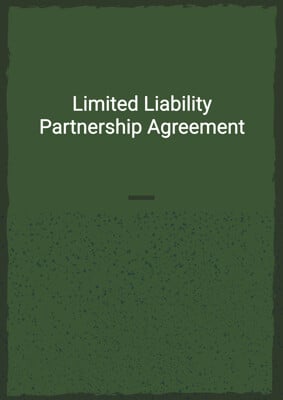How to Tailor the Document for Your Need?
01
Create Document
Fill in the details of the parties. You can click the "Fill with Member’s Information" button to complete it with information saved to your account.
02
Fill Information
Please fill in any additional information by following the step-by-step guide on the left hand side of the preview document and click the "Next" button.
03
Get Document
When you are done, click the "Get Document" button and you can download the document in Word or PDF format.
04
Review Document
The document should be signed by the authorised signatory (or directors of a company) and witnessed to complete the formality.
Document Preview
Document Description
The Partnership Deed is a legal document that establishes a partnership between two parties, referred to as Party 1 and Party 2. The document outlines the importance of the partnership and the purpose of the partnership, which is to conduct business in a specific territory. The partnership is regulated by the terms of this deed, which governs the relationship between the partners and the management of the partnership.
The document begins with an interpretation section, which provides definitions for various terms used throughout the deed. These definitions include accounting period, affiliate, accounts, auditors, budget, business day, business plan, director, effective date, executive manager, partners, partnership board, partnership interest, partnership, percentage share, and more.
The deed also includes clauses and headings for convenience, which do not affect the construction of the deed. It specifies that any reference to a statute, order, or regulation includes references to any amendments, replacements, supplements, or re-enactments of such statute, order, or regulation.
The deed further states that it is effective from the effective date and continues until terminated in accordance with its terms. It outlines the business of the partnership, which is conducted in the best interests of the partnership on sound commercial profit-making principles and in accordance with the business plan. The name of the partnership is specified as well.
The deed includes provisions regarding the partnership capital, further finance, profits and losses, directors and partnership board, executive management, partnership property, undertakings by partners, expenses, accounts, budgets and information, claims by partner, default, assignments, confidentiality and announcements, termination and deadlock, waivers and amendments, severability, entire deed, notices, governing law, settlement of disputes, counterparts, and no rights for third parties.
The deed concludes with the signatures of the duly authorized representatives of Party 1 and Party 2.
How to use this document?
To use the Partnership Deed, follow these steps:
1. Review the entire document to understand its contents and implications.
2. Enter the names and principal places of business of Party 1 and Party 2 in the agreement.
3. Specify the purpose of the partnership and the territory in which it will operate.
4. Familiarize yourself with the definitions provided in the interpretation section.
5. Understand the provisions regarding the partnership capital and the initial contributions to be made by each partner.
6. Determine the funding requirements and the obligations of each partner to contribute their percentage share.
7. Consider the allocation of profits and losses and how they will be credited or debited to the partners' current accounts.
8. Establish the partnership board and its composition, including the appointment and removal of directors.
9. Delegate responsibility for day-to-day executive management to the chief executive and define their role and responsibilities.
10. Understand the provisions regarding partnership property and the ownership of assets.
11. Review the undertakings by partners, including promoting the best interests of the partnership and acting in good faith.
12. Determine the expenses that may be reimbursed by the partnership and the arrangements and procedures for such reimbursement.
13. Ensure proper accounting records are maintained and that auditors are appointed to audit the partnership's accounts.
14. Prepare a draft budget for each accounting period and update the business plan.
15. Understand the provisions regarding claims by partners and the resolution of disputes.
16. Familiarize yourself with the provisions regarding termination and the winding up of the partnership.
17. Review the provisions regarding waivers and amendments, severability, entire deed, notices, governing law, settlement of disputes, counterparts, and no rights for third parties.
18. Sign the Partnership Deed, ensuring that it is executed by the duly authorized representatives of Party 1 and Party 2.
Please note that this guidance is for informational purposes only and does not constitute legal advice. It is recommended to consult with a legal professional to ensure compliance with applicable laws and regulations.
Not the right document?
Don’t worry, we have thousands of documents for you to choose from:






















































